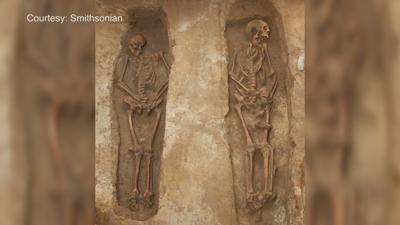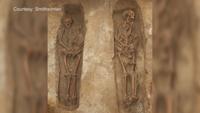REHOBOTH BEACH, Del.- Scientists in Delaware have uncovered 11 colonial burial sites in West Rehoboth, among them the earliest known discovery of remains of enslaved people in Delaware.
The Archaeological Society of Delaware and the Delaware Division of Historical and Cultural Affairs worked with the Smithsonian Institution to investigate the burials, discovered in 2012.
"Without a doubt, from my knowledge having worked with your state for a number of years, these are the earliest recovered historic burials that I'm aware of of having been found and studied in the state of Delaware," says Dr. Douglas Owsley, division head of physical anthropology at the Smithsonian National Museum of Natural History.
Owsley says this local finding has national significance.
"They are the best preserved burials I've seen in the entire Chesapeake area," he explains. "The better the preservation, the more we are able to say about these individuals and the history of this site."
The Archaeological Society of Delaware had been aware of the plot of land--called Avery's Rest--for years. In 1978, it was listed in the National Register of Historic Places, as 17th-century Judge John Avery operated a plantation there.
"He was captain of the militia, so he had a fairly significant role in that chapter of colonial history of Delaware," says Dan Griffith, the Director of Avery's Rest Recovery Project. "We wanted to explore that and try and find his household and its structure."
Griffith says the decision to survey the site came in 2006, after the property was threatened by a housing development.
"I like to say that not looking at an important archaeological site is like taking a book of the history of Delaware and tearing out pages without looking at them," Griffith tells WBOC.
These new findings paint a picture of what life was like in Delaware. On Avery's Rest, for example, many of the skeletons discovered showed the colonists had tooth decay. Additionally, it appears as if people there lived decades longer than those at famed colonial settlement Jamestown.
"It was a frontier at that time," Griffith explains. The Dutch were still here, the English were still here, some Swedish were still here, and Native Americans were still here and they were all interacting within the same generation."
The man who owns the property, Waymon Harmon, says when the scientists approached him, he was supportive.
"I thought they might be right because I found little odds and ends," he says, referring to artifacts he discovered on a regular basis.
Harmon says he's happy that his property played a role in American history.
"By allowing them to go as far as they could go and find out what they could find out, I think it's a big contribution," he says with a smile.
For more on the discovery, click here.






